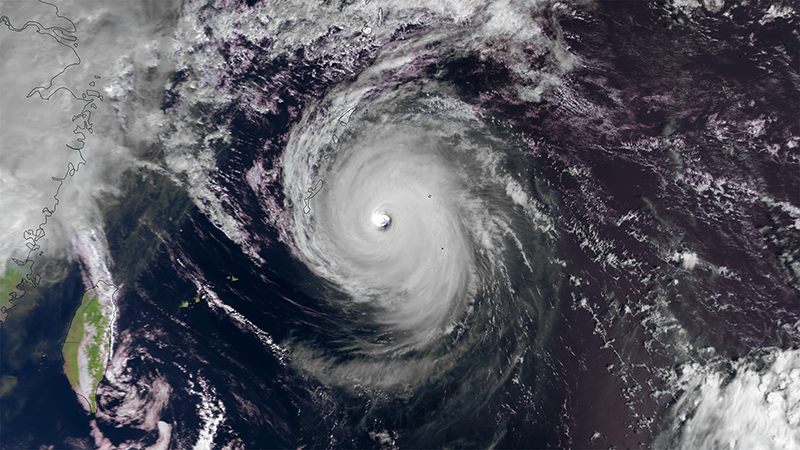Source: Geophysical Research Letters
What exactly happens during a tropical storm over the open ocean is still a mystery to scientists. Their view into the eye of the storm is limited by tools and technology that can travel with a cyclone. But thanks to new technology, scientists now have a better view into how a tropical cyclone can affect surface currents in the open ocean.
Until recently, ocean current data collected during a typhoon have been gathered from shallow waters along the coastline. However, studying shallow waters does not form an accurate representation of the interactions that happen over the deep sea.
In a new study, Mitarai and McWilliams used a Wave Glider, a type of unmanned robot, to simultaneously gather both atmospheric and oceanic data in the open ocean during a typhoon in the Pacific Ocean. The Wave Glider is designed on the surface of the water, but unlike a tethered buoy, the glider can be controlled by scientists in real time and navigated to stay within the eye of the typhoon.
Typhoon Danas formed in the Pacific in October 2013. It reaching the strength of a category 4 hurricane at its peak, with wind speeds reaching 209–251 kilometers per hour, enough power to snap most trees and down power lines, according to the National Hurricane Center. The authors met Typhoon Danas with the Wave Glider 150 kilometers east of Okinawa, Japan.

Unfortunately, the Wave Glider became disabled during its research journey when the underwater wings became entangled with a cable, causing the glider to float around in a large spiraling motion with the current. However, the mishap provided the authors with an unexpected data set: the oscillation pattern of the surface current at Earth’s inertial rotation frequency.
The researchers successfully retrieved the Wave Glider and analyzed these accidental data. The observations showed that wind speed and direction were not equal around the eye of the typhoon. Ahead of the storm, the wind moved in a direction perpendicular to the movement of the typhoon, right across its path. However, in the midst of the storm, the wind direction moved with the typhoon’s path, although at an angle, and the winds on the two sides of the storm were quite asymmetric.
The ocean currents also responded to storm and wind direction change. Just in front of Typhoon Danas, the ocean currents were shown to be traveling in multiple directions, but after the storm passed through, the currents rotated in a clockwise oscillation, running in the same direction as the winds following the typhoon.
The researchers also used the data from the Wave Glider to calculate how much energy was transferred from the surface wind to the ocean currents. The results show that most of the energy transfer from wind to water occurred at the front of the typhoon, passing between 6.3 and 10.0 kilojoules per square meter of energy into the current. For comparison, a bullet shot from a 0.44-caliber Magnum handgun has 1.6 kilojoules of energy.
This new data collection tool will help both ocean and atmospheric scientists study exactly how cyclones and storms affect ocean processes. For future studies, the authors suggest dispatching multiple Wave Gliders at the same time to study storm and current interactions to get an even better view of the many sides of a typhoon. (Geophysical Research Letters, doi:10.1002/2016GL071115, 2016)
—Alexandra Branscombe, Freelance Writer
Citation:
Branscombe, A. (2016), Wave gliding in the eye of the storm, Eos, 97, https://doi.org/10.1029/2016EO064755. Published on 29 December 2016.
Text © 2016. The authors. CC BY-NC-ND 3.0
Except where otherwise noted, images are subject to copyright. Any reuse without express permission from the copyright owner is prohibited.

